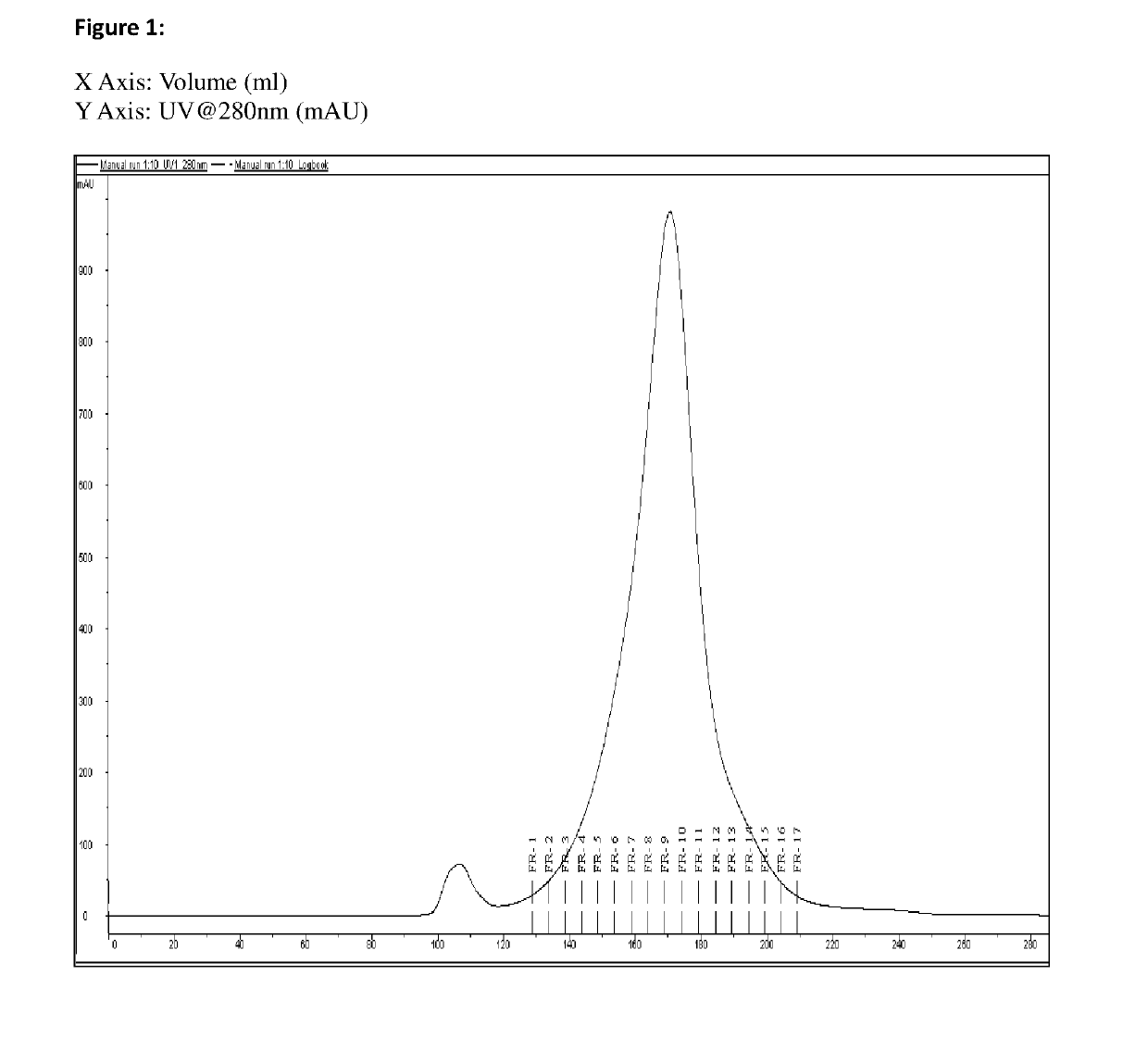Multivalent vaccine composition
a vaccine composition and multi-valent technology, applied in the field of combination vaccines, can solve the problems of poliovirus re-seeding the world, opv has limitations for the post-eradication era, and irreversible paralysis
- Summary
- Abstract
- Description
- Claims
- Application Information
AI Technical Summary
Benefits of technology
Problems solved by technology
Method used
Image
Examples
example 2
on of Injectable heat Inactivated Rotavirus (IRV) antigen
[0126]Rotavirus strain (CDC-9) as disclosed in PCT Patent Application No. PCT / US2010 / 034537 entitled “New Human Rotavirus Strains and Vaccines”, filed May 12, 2010; PCT Patent Application No. PCT / US2008 / 075239 entitled “Thermal Inactivation of Rotavirus”, filed Sep. 4, 2008 was used.
[0127]Centers for Disease Control and Prevention (CDC) has developed a method for rotavirus inactivation. CDC has also developed assay for testing rotavirus specific IgG and neutralizing Antibodies.[0128]Rota virus (CDC-9 strain) was cultured using Vero cells (CCL-81) as host cells and the harvest was clarified using 30+2 μ filter to remove cell debris.[0129]The clarified harvest was treated with Benzonase (5000 units per litre) with incubation at 37° C. for 4 hours with continuous stirring.[0130]Benzonase treated bulk was further 10× concentrate and 4× diafiltered using ‘HBSS (Hanks Balanced Salt Solution) +10% sorbitol’ with 100 KDa cassettes.[01...
example 4
: Purification of Tetanus Toxoid
[0136]Tetanus toxoid was purified using Gel filtration chromatography / HIC (Phenyl Sepharose) with process parameters set as below:
TABLE 3Process ParametersSr. No.ParameterDetails1Used Native Bulk T—2Content (Native Bulk11 mg / mlT) by Lowry's assay3LF / ml30004Method of PurificationGel Filtration Chromatography(GFC)5ResinSephacryl S-300 HR6Column UsedXK 26 / 70 cm7Column Packed bed~50 cmheight8Linear Flow rate1-3 ml / min9Sample (T) loading4% of total bed volume10Fraction Collection5 ml each (2 min)11AnalysisLowry's assay, LF estimation, %Monomer
Results
[0137]Multiple runs were performed using above same parameters. The percent monomer content was found to be in the range of 80-90%.
example 5
on of Hib PRP-Protein conjugate
[0138]PRP polysaccharide was produced as follows:
[0139]H. Influenzae type-b bacteria was grown in semi synthetic media under certain conditions of temperature, agitation and optical density etc. PRP is an outer membrane bound polysaccharide, gets released into the medium during the fermentation under agitation condition. Fermented biomass separated broth contains crude PRP, which is again purified by precipitation using a detergent N, N, N-trimethyl- 1-hexadecanaminium bromide, followed by ethanol gradient precipitation and filtration. Final purified PRP polysaccharide was tested for meeting the specifications like endotoxin, nucleic acid and protein as per the WHO, BP, EP, IP etc.
[0140]Hib PRP-protein conjugate was prepared as follows:
[0141]The polysaccharide conjugate was prepared by coupling of PRP polysaccharide with a CRM197 carrier protein. The input ratio of reactants i.e. PRP polysaccharide, CDAP and CRM197 was selected at 1:1.5:1 ratio for con...
PUM
| Property | Measurement | Unit |
|---|---|---|
| temperature | aaaaa | aaaaa |
| w/w | aaaaa | aaaaa |
| w/w | aaaaa | aaaaa |
Abstract
Description
Claims
Application Information
 Login to View More
Login to View More - R&D
- Intellectual Property
- Life Sciences
- Materials
- Tech Scout
- Unparalleled Data Quality
- Higher Quality Content
- 60% Fewer Hallucinations
Browse by: Latest US Patents, China's latest patents, Technical Efficacy Thesaurus, Application Domain, Technology Topic, Popular Technical Reports.
© 2025 PatSnap. All rights reserved.Legal|Privacy policy|Modern Slavery Act Transparency Statement|Sitemap|About US| Contact US: help@patsnap.com

